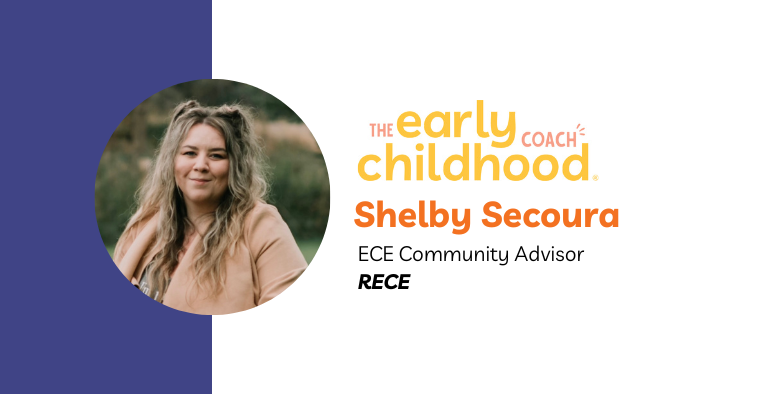Revamp Your ECE Classroom Space: Transforming Classrooms with Creative Hacks
Anisha Grossett • March 18, 2024
One of the best things you can do to keep your classroom children engaged, curious, and stimulated is to change your layout, add different textures, or utilize window space and ceiling areas.
Redesigning should be your friend, not something scary!
Adding wall art, decor, and organic materials should never be overlooked. This is a classroom, yes, but it is also your home away from home. Let's make it beautiful and functional together with these classroom hacks.
The first and easiest thing I always recommend
for any classroom is bringing in live plants. Artificial plants can offer some benefits, but the advantages of live plants outweigh the cons of nurturing them. Plants offer stress-reducing and calming properties that can help with mental ailments. They also improve the air quality around you, which is a great hack for fresher air when your classroom windows don’t open. Plus, it's fun to have the children water and garden with you—a hack for children is to cut a paper plate on one side into the middle and place it around the plant on top of the soil, acting as a barrier. This will keep any unwanted hands out of the soil!
The next recommendation
I would make is to get some wall decor! This is helpful for you as the educator, creating a second home for the children and for someone who enjoys both functional and unique art. The best thing you can do for your classroom is to get some stuff on the walls, using macrame hangers for your plants, stuffed animals, or other items. Have some natural materials on your bulletin boards like burlap, fabric pieces, or even faux fur or plants as borders. Now, I’m sure you’re wondering why this is even a recommendation, let alone a top recommendation. That's because these are also functional—they help reduce sound in the classroom. Reducing classroom sounds helps children develop speech and even reduces some unwanted behaviours.
The last recommendation
I can give—aside from learning more about your specific room's needs and interests—is to add lights and covers to the lights. Classrooms can go from very energetic to winding down for nap time by simply changing the lights from white/yellow to blue. Great ways to incorporate this are through cost-effective LED light strips, fairy lights, and even desk lamps with blue light bulbs. We forget as adults that light is a visual cue for us. The light tells us when it's bedtime, or for those of us from the 80s and 90s when to get home. The light also tells us when to wake up. Why can’t it tell us when to feel calm or when to feel kindness? To further that, studies have also shown light can be used as therapy to heal the body. Utilizing lights and colours to your classroom's needs is a home run all around; it's good for the soul, the body, and the mind!
Redesigning your room shouldn’t cost hundreds of dollars. These three incredible hacks should cost under $20 each, or you can shop around for a bargain on local marketplaces to stretch your dollar.
These are so simple but often missed. Once you start integrating any one of these into your classroom, you’ll notice a difference in the children, how you show up to educate the little ones, and how many parents and peers want to incorporate your ideas into their spaces.


December has a way of sneaking up on us, doesn’t it? One moment, we’re kicking off a new year with fresh goals, and the next, we’re knee-deep in holiday plans, wrapping up projects, and trying to catch our breath. For early childhood educators and leaders, this time of year can feel especially heavy — the final push before the holidays often comes with its own mix of joy, exhaustion, and reflection. But here’s the truth: the end of the year is not just a closing chapter. It’s an invitation — to pause, to rest, and to prepare ourselves for what’s to come. This December, let’s shift the focus from “finishing strong” to “resting strong.” Because when you rest well, you’re not stepping back — you’re stepping into the new year with clarity, energy, and purpose.

In early childhood education, we often talk about nurturing growth. But how often do we create the same nurturing environment for our own professional development? Whether you're an educator wondering what’s next or a childcare owner thinking about how to keep your best staff, one truth remains: career growth in ECE doesn’t follow a single, straight path. It’s dynamic. It’s personal. And it should be intentional. It’s time to explore the many ways early childhood professionals can move forward — not just up — in their careers.

Becoming a leader in Early Childhood Education (ECE) is an exciting yet challenging transition. Whether you're stepping into a leadership role for the first time or moving up within a company you've been a part of, this journey requires new skills, a fresh mindset, and a commitment to growth. Leadership in ECE goes beyond management — it’s about fostering relationships, guiding educators, and creating a thriving learning environment for children and staff alike. Essential Tips for New ECE Leaders & Supervisors 1. Embrace Active Listening Leadership isn’t just about giving instructions — it’s about truly hearing and understanding your team. Actively listen to educators, parents, and children to build trust and show that their voices matter. 2. Build Strong Relationships Strong leadership is rooted in strong relationships. Take time to connect with your team on a personal level, understand their strengths, and foster a culture of collaboration and respect. 3. Lead by Example Your team will look to you as a role model. Show professionalism, positivity, and a willingness to learn, and your team will follow suit. 4. Communicate Clearly and Consistently Clarity in communication helps prevent misunderstandings and ensures that expectations are met. Be open, transparent, and available for discussions. 5. Stay Open to Feedback Leadership is a continuous learning process. Invite and accept feedback with an open mind, and use it to refine your approach. 6. Prioritize Professional Development As an ECE leader, ongoing learning is key. Engage in training sessions, read leadership books, and seek mentorship to continue growing in your role.

Conflict is an inevitable part of any human relationship — and in the dynamic, emotionally rich environment of early childhood education, it can arise in many forms. Whether you’re leading a team or working directly with children and families, knowing how to approach conflict with confidence, empathy, and clarity is a key part of thriving in this field. At The Early Childhood Coach, we believe that conflict doesn’t have to be destructive — it can actually be a catalyst for growth, stronger relationships, and positive change. Let’s explore the different types of conflict you may encounter, and how you can manage them with intention and leadership.

In today’s fast-evolving world of early childhood education, professional development can no longer be a one-time event or an annual checkbox. The most innovative organizations are embracing a new model of learning — one that’s flexible, sustainable, and embedded into the culture of their team. Enter: the Learning Management System (LMS) and the rise of in-house training ecosystems. 🌍 The Shift to Ongoing, Accessible Learning A Learning Management System (LMS) is a digital platform used to deliver, track, and manage training and education. Think of it as a virtual hub where your team can access workshops, modules, videos, and interactive learning activities — all at their own pace. More than a trend, LMS platforms are becoming an essential tool for childcare organizations that want to stay aligned with licensing requirements, increase staff engagement, and reduce onboarding time for new educators. But even more importantly, they empower staff to grow in real time — with content tailored to their daily realities.

Welcoming new Early Childhood Educators (ECEs) and staff into your center is more than just handing them a policy manual and showing them the breakroom. A strong, innovative onboarding process sets the foundation for their success, increases retention, and fosters a positive workplace culture. Yet, research shows that onboarding remains a challenge in many early childhood settings. The Challenge of Onboarding in Early Childhood Education A 2022 report from the Society for Human Resource Management (SHRM) found that nearly 30% of new employees leave a job within the first 90 days, with lack of proper onboarding and insufficient mentorship being key reasons. In early childhood education, this is especially concerning, as new hires must quickly adapt to a fast-paced environment while learning center policies, child development best practices, and team collaboration strategies. Traditional onboarding methods often focus on paperwork and compliance, missing the opportunity to engage new educators in meaningful ways. To combat high turnover and ensure new hires feel supported, early childhood leaders must embrace innovative and unconventional onboarding strategies that foster connection, growth, and a sense of belonging from the start.

As educators working with infants, one of the most important tools in our communication tool box is our voices! Lalalalaaaaaa! Our voices are dynamic and powerful tools used for many things including singing, laughing, advocating, and so much more. One of these these amazing and scientifically proven ways to use our voices is child-directed speech, also known as parentese or as I like to call it - Educatorese 😉! Sometimes mistaken for “baby talk”, child-directed speech plays a critical role in how infants and toddlers learn (and enjoy) language. In this blog post, we will dive into the science of child directed speech, some practical ways to incorporate it effectively into childcare connections, and reflect on how you use your voice with babies!

“The environment is the third teacher.” This phrase is one I’ve heard often throughout my career in early childhood education. Rooted in the Reggio Emilia approach, it emphasizes the environment as an intentional and purposeful extension of learning. I’ve wholeheartedly embraced this philosophy in my own classrooms, recognizing that a well-designed environment is more than just a space—it’s an active teaching experience and a direct reflection of a program’s values. Have you ever taken a step back to observe how children interact with their surroundings? Watching how they explore, navigate, and engage with their environment can be incredibly insightful. As educators, it’s our role to create a space that fosters curiosity, collaboration, and meaningful learning opportunities. A thoughtfully designed classroom should: ✔ Have a natural flow that supports exploration and learning. ✔ Reflect children’s interests and showcase evidence of their growth. ✔ Provide opportunities for investigation, creativity, and problem-solving. ✔ Serve as a tool for classroom management by promoting engagement and minimizing disruptions. For example, we know children love to run. Structuring the classroom layout with intentional furniture placement can help prevent open running paths while still allowing movement and engagement. A well-planned space should feel inviting, safe, and supportive while fostering a sense of belonging for every child.

As educators, we know the environment we create plays a vital role in shaping the learning experiences of children. A well-organized, thoughtfully designed classroom sets the stage for creativity, exploration, and growth—all while promoting positive behavior and independence. Whether you're setting up your classroom for the first time or giving it a mid-year refresh, these actionable tips will help you create a welcoming, functional, and inspiring space for success.

It was a typical morning in the classroom. The hum of busy little hands and curious minds filled the air. Maya, an Early Childhood Educator (ECE), glanced around, her heart swelling with pride. It was moments like these—when a child’s eyes lit up with understanding or when a shy toddler found the courage to join a group—that reminded her why she chose this path. Yet, deep down, Maya often wondered: Am I really a leader? Perhaps you, too, have asked yourself the same question. The word "leader" may bring to mind images of CEOs in boardrooms or heads of organizations rallying teams. But let’s shift that perspective. Leadership isn’t about titles; it’s about influence, impact, and the way you inspire those around you—adults and children alike. As an ECE, you are already a leader. The question is, how can you activate your leadership fully? Let’s take a journey together, exploring how to unlock the leader within. Because here’s the truth: Every ECE is a leader in early childhood education.
